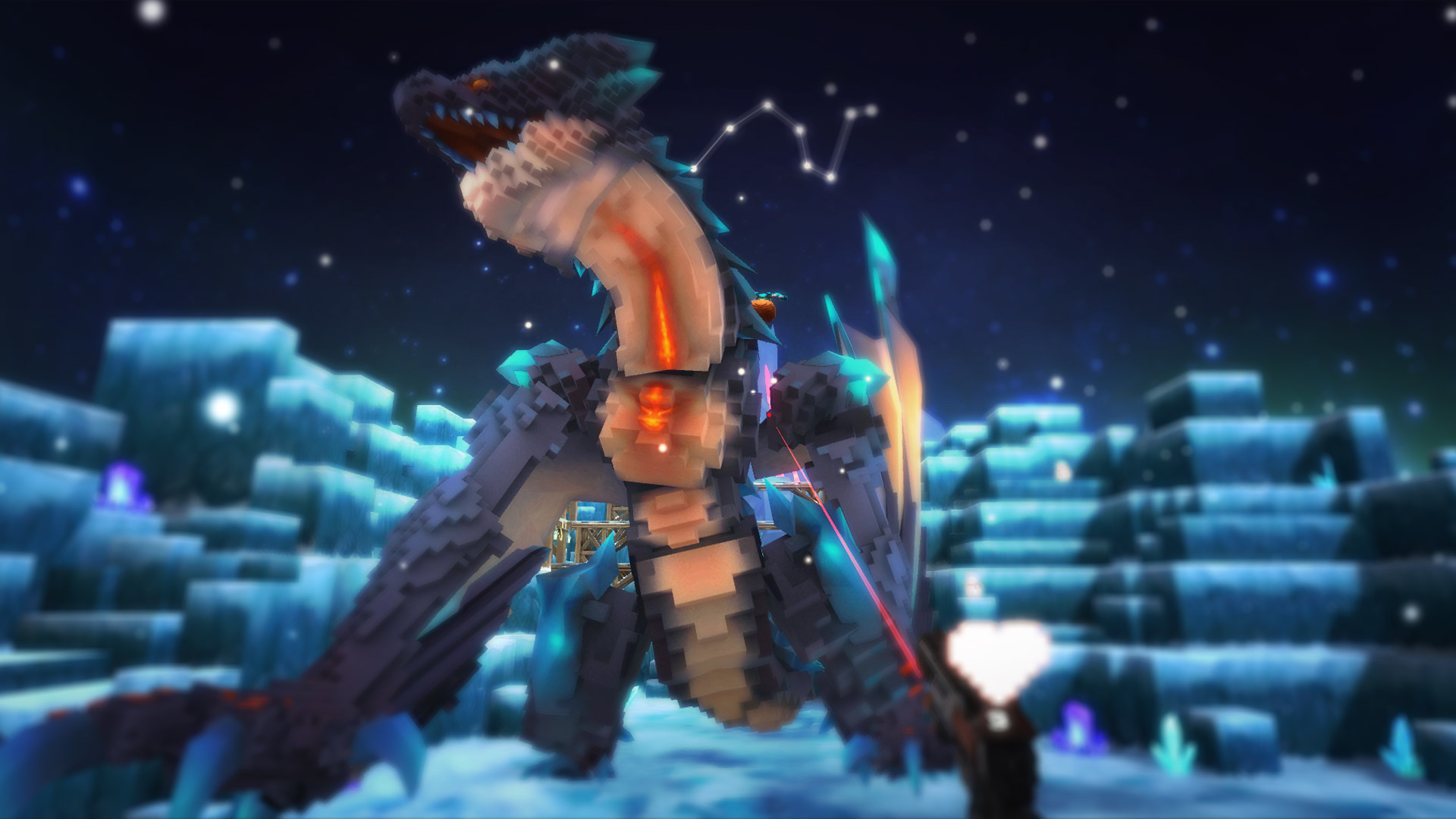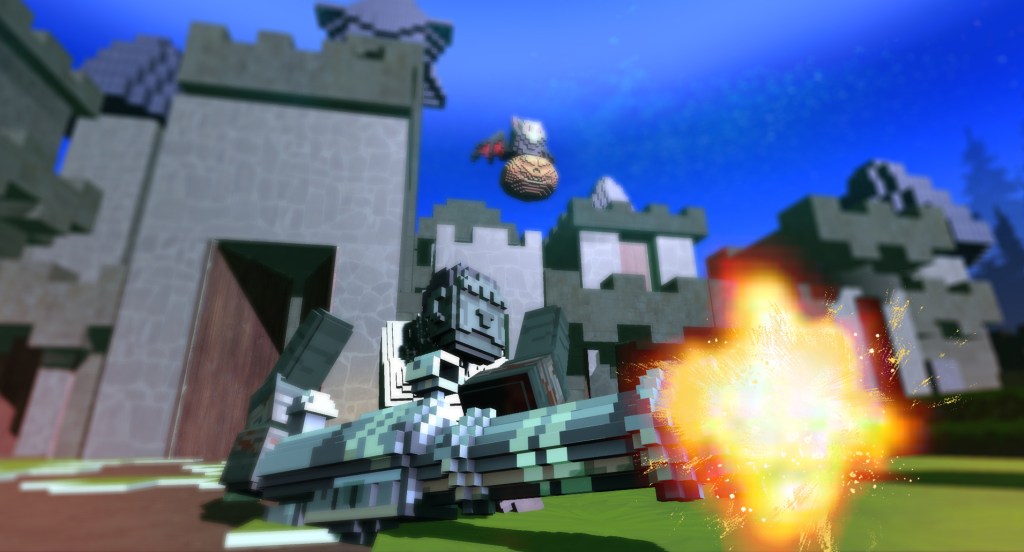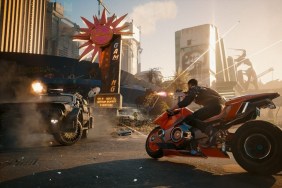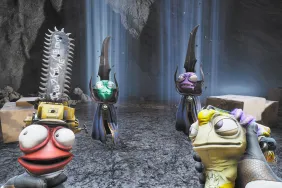Motion controls and first-person shooters seems like a perfect fit in theory, but they’ve always felt a bit off when I’ve played them. I’ve never really been able to put my finger on it until now, but using a Wii remote or a PlayStation Move controller to point at the screen has never replicated using a gun very well unless I bought a ridiculous plastic accessory that made it look like a knockoff light gun. Brilliantly, Pixel Gear, a new arcade shooter for PlayStation VR, finally gets it right.
Pixel Gear still uses a PlayStation Move controller to aim a gun, but the major difference is in how the player holds it. Instead of pointing the end of the Move controller at the PlayStation Camera in order to aim, players instead hold the controller vertically. Think about it, when holding a gun your hand is on the pistol grip, which is vertical. Not on the barrel that shoots horizontally. This small change makes shooting feel so much more natural.
I discovered all of this while still in Pixel Gear‘s menu, before I had even shot a single enemy. Suddenly I was excited about what awaited me, as it seemingly had all of the potential in the world. I then awkwardly selected the single-player option from the main menu (which is super weird since it’s the game’s only mode, so why do players have to select it?), and went on a super disappointing journey where the reality of Pixel Gear set in.
Despite the exciting gunplay, Pixel Gear is a by-the-numbers wave-based shooter. In the first wave I played, I simply sat from a vantage point, and had to shoot at a series of skeletons. Then a little variety was introduced when flying bats started to appear, but it was once again just shooting targets (which is made very easy due to the gun having a laser-sight attached to it). The only real challenge is that if an enemy isn’t shot within 30 seconds or so, they start to throw projectiles at the player. These can be shot down, though, so anyone quick on the trigger can get through the game’s levels without any real worry.
After a few waves, I had seen all of the different enemy types that developer Geronimo Interactive had conjured up. The art design is actually pretty solid, as a Frankenstein’s monster-looking creature fired a huge cannon at me, but there are only like six different types of foes. This leads to the waves feeling really repetitive, and the only challenge the game can really offer up is throwing more enemies at the player since none of them offer up an exciting challenge. Occasionally characters will wear a helmet that needs to be knocked off with a headshot. When the big challenge is getting two headshots, instead of one, it’s not much of a strategy change.
Things finally got better at the end of the first level, as I got to battle a giant boss. These battles are more interesting than the boring waves that come before them, but they still aren’t anything special. Rather than shooting these gigantic foes in the head a hundred times, I had to shoot specifically marked locations. It’d be a lot more fun if the enemies were more like puzzles the player had to figure out, but no, just shoot the highlighted spots until they die.
Ghost Town
After I had finished the first stage, the reality of Pixel Gear had set in. Despite the shooting feeling fantastic, this wasn’t interesting or fun to play. A good mechanic still needs to be surrounded with an interesting game, which is why just having Mario’s jump won’t make a platformer special. There needs to be interesting levels, enemies that offer a challenge, and something that keeps the player coming back.
Still, I’ve played quite a few games that had bad early stages, so I was hopeful that Geronimo Interactive would get things right by the time I finished the game. That wasn’t even possible as the game only features three levels. Yes, it has three levels that each take less than 20 minutes to beat. These levels take place in different locales (one in a castle and the other in an ice fortress), but the gameplay and the general level design stayed the same.
That makes Pixel Gear an incredibly boring and monotonous game that is paired with a severe lack of content. There are a different difficulties that players can select, but that’s the entirety of the game modes on offer. It feels incomplete, and like it was rushed to be an early PlayStation VR title. That’s the only reason why I can imagine that the main menu is so empty.
It’s a bummer that Pixel Gear seemingly stumbled upon the perfect control scheme for a shooter in VR and then created a boring wave-based game around it. They do try to make it slightly more interesting by adding in a few different guns (which are bought between waves by using coins you earn by shooting ghosts), but these all have limited amounts of ammo unlike the regular pistol. That led me to rarely use the grenade launcher and SMG that I purchased, and I found the fourth weapon (a sniper rifle) completely unusable since it wants players to look down the sight instead of using a laser. The game moves way too fast for sniping to be feasible, so I just stuck with the pistol and was able to S-rank levels with ease.
Pixel Gear has the base to be something truly great, but it ends before hitting any real type of stride. With only three levels, and a strangely designed main menu, it feels more like a proof-of-concept that never was fleshed out. Hopefully the first-person shooter will get updated with more content and features in the future, but right now it’s just a whole lot of missed potential.
Review code for Pixel Gear provided by publisher. Reviewed on PlayStation 4. For more information on scoring, please read our Review Policy here.
-
Smart use of the Move controller
-
Shooting feels good
-
Boss fights are interesting
-
There are only three stages
-
Sniper Rifle feels useless
-
Gets repetitive
Pixel Gear Review
-
Pixel Gear

-
Pixel Gear
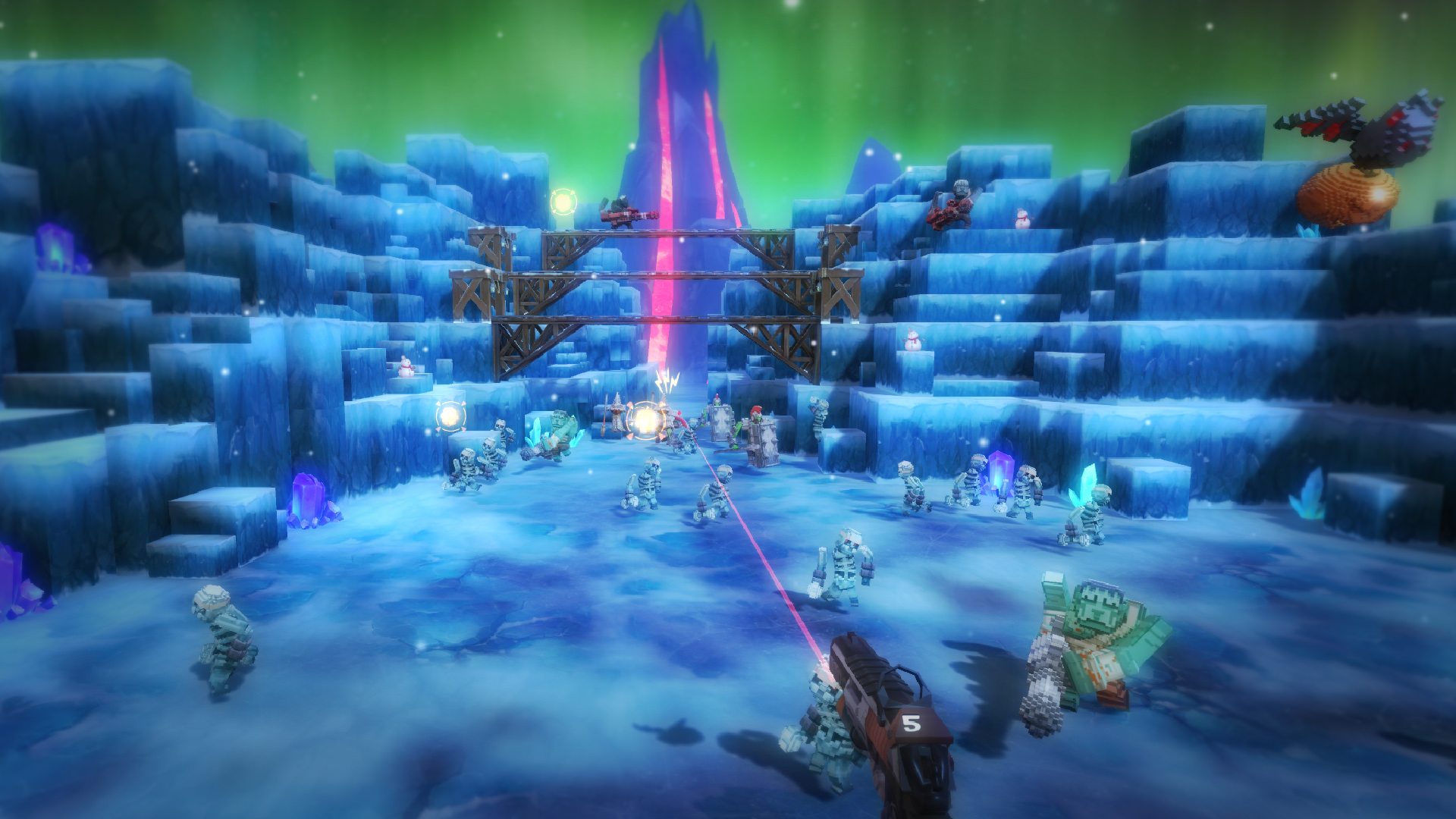
-
Pixel Gear
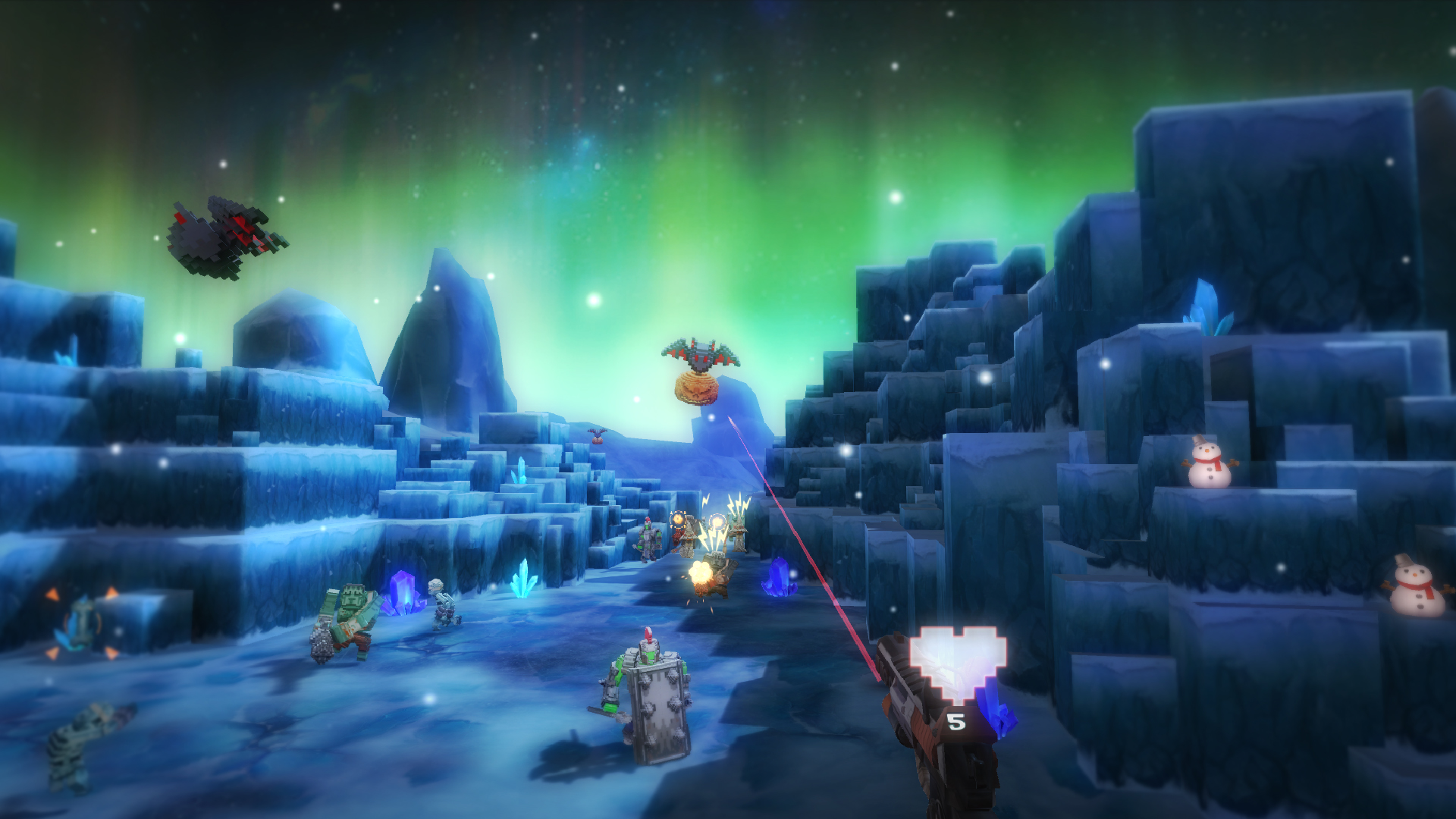
-
Pixel Gear
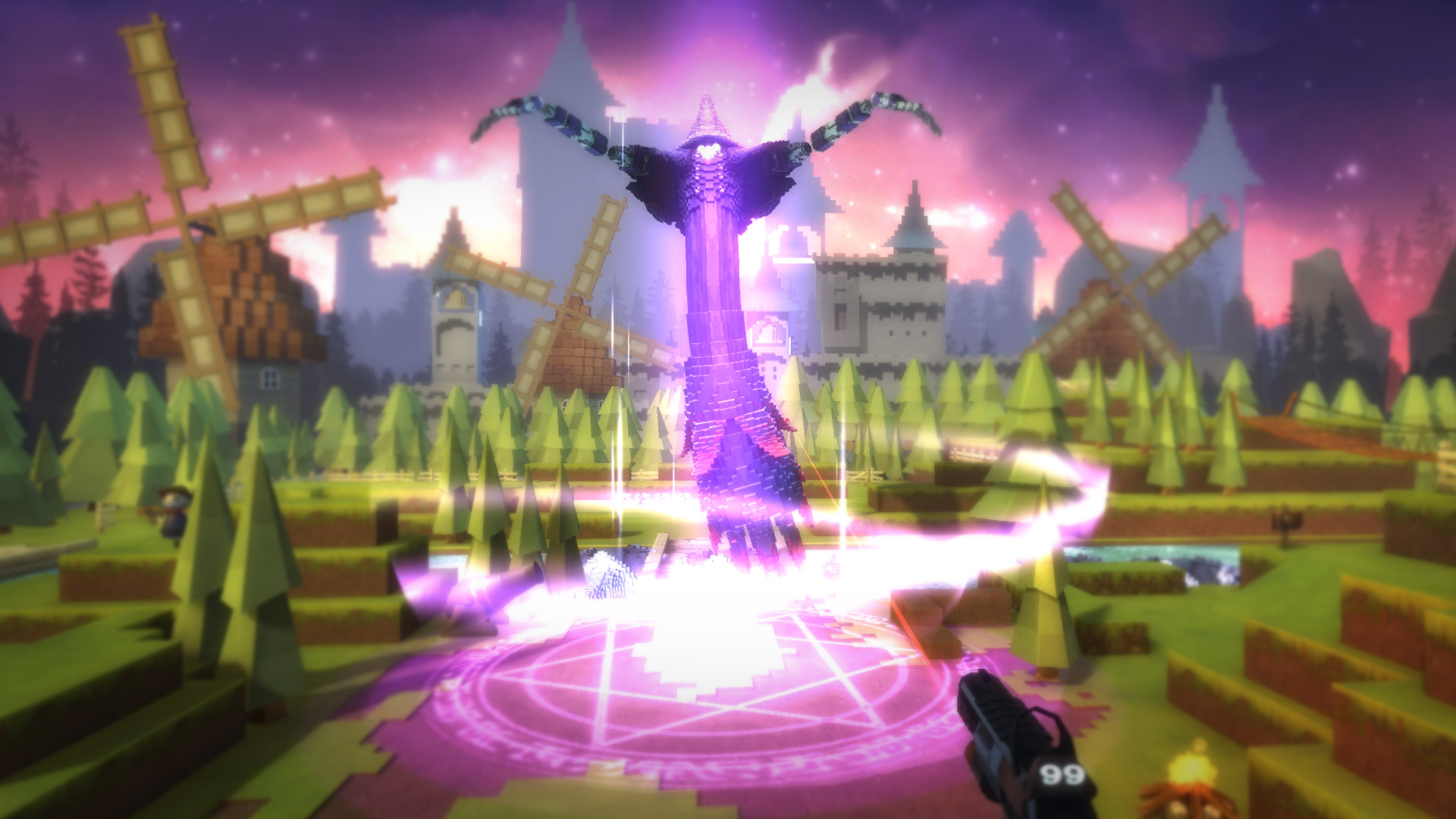
-
Pixel Gear
